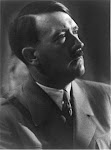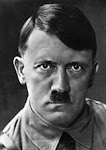
This is another one of histories topmost dictators that was responsible for the deathe of millions of people and since i am dedicating this blog to some of the most powerfull me that had ever lived i feel it wont be complete if i didnt mention this distinct character.
One of the most powerful and murderous dictators in history, Stalin was the supreme ruler of the Soviet Union for a quarter of a century. His regime of terror caused the death and suffering of tens of millions, but he also oversaw the war machine that played a key role in the defeat of Nazism.
Iosif Vissarionovich Dzhugashvili was born on 18 December 1879 in Gori, Georgia, which was then part of the Russian empire. His father was a cobbler and Stalin grew up in modest circumstances. He studied at a theological seminary where he began to read Marxist literature. He never graduated, instead devoting his time to the revolutionary movement against the Russian monarchy. He spent the next 15 years as an activist and on a number of occasions was arrested and exiled to Siberia.
Stalin was not one of the decisive players in the Bolshevik seizure of power in 1917, but he soon rose through the ranks of the party. In 1922 he was made general secretary of the Communist Party, a post not considered particularly significant at the time but which gave him control over appointments and thus allowed him to build up a base of support. After Lenin's death in 1924, Stalin promoted himself as his political heir and gradually outmanoeuvred his rivals. By the late 1920s, Stalin was effectively the dictator of the Soviet Union.
His forced collectivisation of agriculture cost millions of lives, while his programme of rapid industrialisation achieved huge increases in Soviet productivity and economic growth but at great cost. Moreover, the population suffered immensely during the Great Terror of the 1930s, during which Stalin purged the party of 'enemies of the people', resulting in the execution of thousands and the exile of millions to the gulag system of slave labour camps.
These purges severely depleted the Red Army, and despite repeated warnings, Stalin was ill prepared for Hitler's attack on the Soviet Union in June 1941. His political future, and that of the Soviet Union, hung in the balance, but Stalin recovered to lead his country to victory. The human cost was enormous but that mattered little to him.
After World War Two, the Soviet Union entered the nuclear age and ruled over an empire which included most of eastern Europe. Increasingly paranoid, Stalin died of a stroke on 5 March 1953. (This article was gotten from www.bbc.co.uk/history/historic_figures/stalin_joseph.shtml)
Iosif Vissarionovich Dzhugashvili was born on 18 December 1879 in Gori, Georgia, which was then part of the Russian empire. His father was a cobbler and Stalin grew up in modest circumstances. He studied at a theological seminary where he began to read Marxist literature. He never graduated, instead devoting his time to the revolutionary movement against the Russian monarchy. He spent the next 15 years as an activist and on a number of occasions was arrested and exiled to Siberia.
Stalin was not one of the decisive players in the Bolshevik seizure of power in 1917, but he soon rose through the ranks of the party. In 1922 he was made general secretary of the Communist Party, a post not considered particularly significant at the time but which gave him control over appointments and thus allowed him to build up a base of support. After Lenin's death in 1924, Stalin promoted himself as his political heir and gradually outmanoeuvred his rivals. By the late 1920s, Stalin was effectively the dictator of the Soviet Union.
His forced collectivisation of agriculture cost millions of lives, while his programme of rapid industrialisation achieved huge increases in Soviet productivity and economic growth but at great cost. Moreover, the population suffered immensely during the Great Terror of the 1930s, during which Stalin purged the party of 'enemies of the people', resulting in the execution of thousands and the exile of millions to the gulag system of slave labour camps.
These purges severely depleted the Red Army, and despite repeated warnings, Stalin was ill prepared for Hitler's attack on the Soviet Union in June 1941. His political future, and that of the Soviet Union, hung in the balance, but Stalin recovered to lead his country to victory. The human cost was enormous but that mattered little to him.
After World War Two, the Soviet Union entered the nuclear age and ruled over an empire which included most of eastern Europe. Increasingly paranoid, Stalin died of a stroke on 5 March 1953. (This article was gotten from www.bbc.co.uk/history/historic_figures/stalin_joseph.shtml)

































1 comment:
Knowing about Russia history has been of help to me .thanx and keep it up
Post a Comment